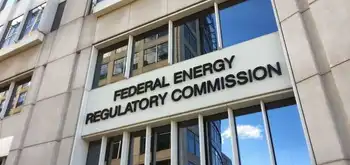Wind power a dilemma for Ontario
By Toronto Star
Protective Relay Training - Basic
Our customized live online or in‑person group training can be delivered to your staff at your location.

- Live Online
- 12 hours Instructor-led
- Group Training Available
The cruise was timed to coincide with a global wind power conference at St. Lawrence College.
Trillium's goal was simple: Show people, rather than just tell, how much stronger and consistent the wind is when venturing offshore.
About 30 minutes into the ride the mission was accomplished. What was a relatively smooth cruise became a stomach-churning experience as the wind-battered Catamaran, big enough to hold 180 people, began shifting back and forth in the water. Staff ran to keep bottles of wine from smashing on to the floor, while guests were urged to stay seated.
"The wind here is three times more powerful," said John Kourtoff, chief executive of Trillium, as he compared the potential wind energy from his project to existing onshore wind farms scattered around southern Ontario.
Kourtoff wants to build a 750-megawatt offshore wind farm in these waters, about 15 kilometres off the shore of Prince Edward County. That works out to about 150 wind turbines, seen as specks from the shoreline. And there's potential to double that.
Earlier in June, he announced the creation of Tai Wind, a consortium of North American offshore wind developers who hope, by combining their collective needs, to attract a turbine manufacturer to Ontario.
Already, Germany's Multibrid is seriously considering the invitation and, sources say, has begun high-level discussions between its executives and Ontario government officials.
Multibrid's interest is understandable. A recent report from energy consultancy Helimax concluded there were 64 sites on the Ontario side of the Great Lakes representing up to 34,500 megawatts of offshore wind capacity. This means the Trillium project is just scratching the surface.
Just recently, Toronto Hydro said it was renewing its efforts to establish an 80-turbine offshore wind farm near the Scarborough Bluffs.
"Offshore wind will be a driver of growth for the wind industry in the years to come," concluded investment firm Kyoto Planet Asset Management in a research report.
Also understandable is the government's interest. Embracing offshore wind is more than just adding more renewable energy to the grid, it could form the basis of a new "green" industrial strategy aimed at creating green-collar jobs. Multibrid is potentially the seed for that strategy, as it would need to develop a supply chain to support its Ontario growth plan. More than that, it sees Ontario as a manufacturing hub as it seeks to expand sales across North America and beyond.
It's welcome news at a time when production lines and plants are being shut down at Ontario automotive manufacturers. The idea makes so much sense that some unlikely alliances are being formed. When Trillium announced the Tai Wind consortium earlier this month, representatives from environmental groups WWF Canada and the David Suzuki Foundation shared the stage with the Canadian Auto Workers union, which fully backs the consortium's goals.
Natural Resources Minister Donna Cansfield told the Star that Ontario is "open for business" when it comes to offshore wind. George Smitherman, now minister of energy and infrastructure, wanted so much to express his support for wind-industry growth in Ontario that just days after his appointment he made an unscheduled speech at the Kingston wind conference.
There's a sense of urgency, and a recognition that if Ontario doesn't act on the opportunity, other jurisdictions will.
But a big question remains: How much does offshore wind cost?
The Ontario Power Authority, the government agency that effectively determines which large power projects live or die, says offshore wind costs too much to be considered in its 20-year power system plan. It acknowledges that the technology provides more power than onshore projects, but not enough to justify the higher cost of building offshore wind farms.
"It should be borne in mind that there is currently no experience in Ontario with offshore wind resources, and it may be that additional information may become available over time that would justify further review of this issue," the power authority concluded in a recent amendment to its 20-year plan.
Herein lies a classic chicken-and-egg dilemma. How can the province get a true sense of development costs without forging ahead on at least one project?
We can point to ocean-based offshore projects in Europe and make comparisons, but there are major differences to consider that may work in Ontario's favour. For one, planting a big wind turbine in relatively shallow and calm lake waters would seem to be an advantage in terms of costs. And since we're talking fresh water, there's no risk of salt degrading the mechanical performance of turbines. Also important to consider is the degree to which local manufacturing could reduce turbine and component costs.
It's unclear whether the power authority has taken this into account. Nor has the agency considered larger economic considerations, such as job creation. Technically, it doesn't have that mandate. It exists to get what it perceives to be the cheapest, most reliable power it can for consumers and industry. Power authority executives, mostly former Ontario Hydro engineers who are smart and well intentioned, aren't naturally inclined to include wind, solar and other intermittent sources of renewable energy in their big-picture plans. They reluctantly do so under direction from the government.
The power authority, said one cruise guest, "has its hands full with nuclear".
Clearly, the government has some strategic decisions to make. Sooner, it would appear, than later.











